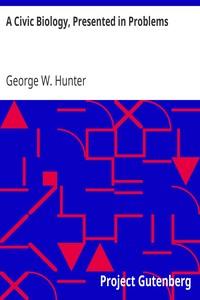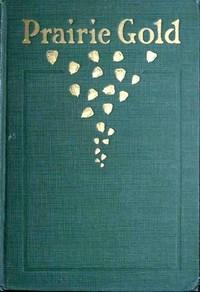|
|
Read this ebook for free! No credit card needed, absolutely nothing to pay.Words: 106533 in 28 pages
This is an ebook sharing website. You can read the uploaded ebooks for free here. No credit cards needed, nothing to pay. If you want to own a digital copy of the ebook, or want to read offline with your favorite ebook-reader, then you can choose to buy and download the ebook.

: A Civic Biology Presented in Problems by Hunter George W George William - Biology; Sanitation@FreeBooksWed 07 Jun, 2023 ion the water needed to support life in the western desert lands. Light as Condition of the Environment.--Light is another important factor of the environment. A study of the leaves on any green plant growing near a window will convince one that such plants grow toward the light. All green plants are thus influenced by the sun. Other plants which are not green seem either indifferent or are negatively influenced the source of light. Animals may or may not be attracted by light. A moth, for example, will fly toward a flame, an earthworm will move away from light. Some animals prefer a moderate or weak intensity of light and live in shady forests or jungles, prowling about at night. Others seem to need much and strong light. And man himself enjoys only moderate intensity of light and heat. Look at the shady side of a city street on any hot day to prove this statement. Adaptations.--Plants and animals are not only fitted to live under certain conditions, but each part of the body may be fitted to do certain work. I notice that as I write these words the fingers of my right hand grasp the pen firmly and the hand and arm execute some very complicated movements. This they are able to do because of the free movement given through the arrangement of the delicate bones of the wrist and fingers, their attachment to the bones of the arm, a wonderful complex of muscles which move the bones, and a directing nervous system which plans the work. Because of the peculiar fitness in the structure of the hand for this work we say it is adapted to its function of grasping objects. Each part of a plant or animal is usually fitted for some particular work. The root of a green plant, for example, is fitted to take in water by having tiny absorbing organs growing from it, the stems have pipes or tubes to convey liquids up and down and are strong enough to support the leafy part of the plant. Each part of a plant does work, and is fitted, by means of certain structures, to do that work. It is because of these adaptations that living things are able to do their work within their particular environment. Plants and Animals and their Natural Environment.--Those of us who have tried to keep potted plants in the schoolroom know how difficult it is to keep them healthy. Dust, foreign gases in the air, lack of moisture, and other causes make the artificial environment in which they are placed unsuitable for them. A goldfish placed in a small glass jar with no food or no green water plants soon seeks the surface of the water, and if the water is not changed frequently so as to supply air the fish will die. Again the artificial environment lacks something that the fish needs. Each plant and animal is limited to a certain environment because of certain individual needs which make the surroundings fit for it to live in. Changes in Environment.--Most plants and animals do not change their environment. Trees, green plants of all kinds, and some animals remain fixed in one spot practically all their lives. Certain tiny plants and most animals move from place to place, either in air, water, on the earth or in the earth, but they maintain relatively the same conditions in environment. Birds are perhaps the most striking exception, for some may fly thousands of miles from their summer homes to winter in the south. Other animals, too, migrate from place to place, but not usually where there are great changes in the surroundings. A high mountain chain with intense cold at the upper altitudes would be a barrier over which, for example, a bear, a deer, or a snail could not travel. Fish like trout will migrate up a stream until they come to a fall too high for them to jump. There they must stop because their environment limits them. Man in his Environment.--Man, while he is like other animals in requiring heat, light, water, and food, differs from them in that he has come to live in a more or less artificial environment. Men who lived on the earth thousands of year ago did not wear clothes or have elaborate homes of wood or brick or stone. They did not use fire, nor did they eat cooked foods. In short, by slow degrees, civilized man has come to live in a changed environment from that of other animals. The living together of men in communities has caused certain needs to develop. Many things can be supplied in common, as water, milk, foods. Wastes of all kinds have to be disposed of in a town or city. Houses have come to be placed close together, or piled on top of each other, as in the modern apartment. Fields and trees, all outdoor life, has practically disappeared. Man has come to live in an artificial environment. REFERENCE BOOKS ELEMENTARY ADVANCED LABORATORY SUGGESTIONS On any bright warm day in the fall we will find insects swarming everywhere in any vacant lot or the less cultivated parts of a city park. Grasshoppers, butterflies alighting now and then on the flowers, brightly marked hornets, bees busily working over the purple asters or golden rod, and many other forms hidden away on the leaves or stems of plants may be seen. If we were to select for observation some partially decayed tree, we would find it also inhabited. Beetles would be found boring through its bark and wood, while caterpillars are feeding on its leaves or building homes in its branches. Everywhere above, on, and under ground may be noticed small forms of life, many of them insects. Let us first see how we would go to work to identify some of the common forms we would be likely to find on plants. Then a little later we will find out what they are doing on these plants. Free books android app tbrJar TBR JAR Read Free books online gutenberg More posts by @FreeBooks
: Life History and Ecology of the Five-Lined Skink Eumeces fasciatus by Fitch Henry S Henry Sheldon - Eumeces fasciatus@FreeBooksWed 07 Jun, 2023

: Prairie Gold by Iowa Press And Authors Club Ficke Arthur Davison Contributor Garland Hamlin Contributor Hough Emerson Contributor Brigham Johnson Editor LeCron Helen Cowles Editor Smith Lewis Worthington Editor Darling Jay N Jay Norwood Illustrator Macy Ha@FreeBooksWed 07 Jun, 2023

: Bonaparte in Egypt and the Egyptians of To-day by Browne Abdullah - Egypt History French occupation 1798-1801; Napoleon I Emperor of the French 1769-1821 Relations with Egyptians; Second Coalition War of the 1798-1801 Campaigns Egypt; Egypt History British@FreeBooksWed 07 Jun, 2023
|
Terms of Use Stock Market News! © gutenberg.org.in2025 All Rights reserved.






